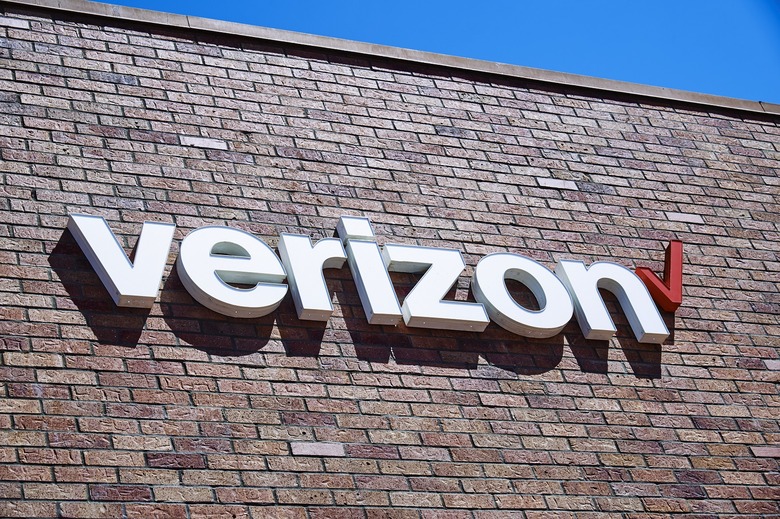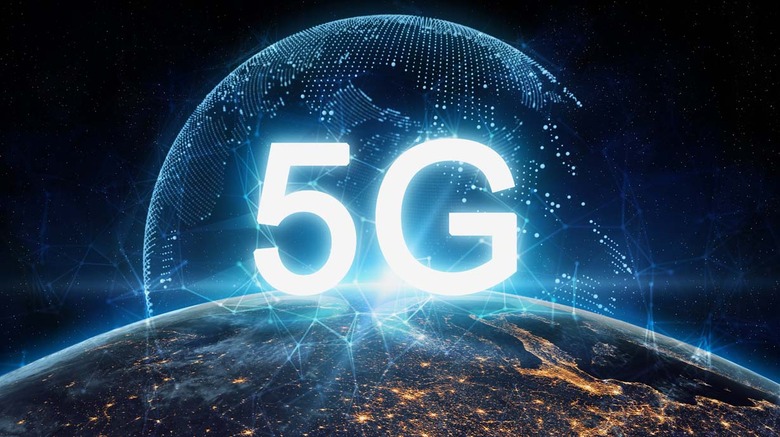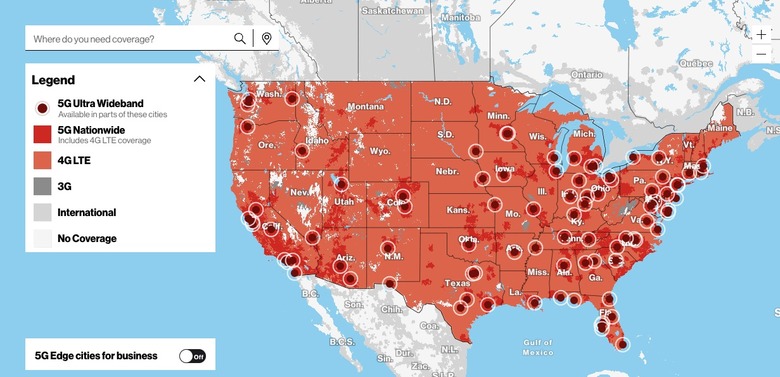Verizon 5G: Everything You Need To Know About Big Red's 5G Network
5G is well and truly on the way, promising to bring with it much faster connection speeds, lower latency, and more. 5G is tipped to support new technologies like game streaming, connected cars, and so on. Verizon wants to lead the pack. Verizon, along with AT&T, was quick to deploy 5G networks early, but it took a while for those networks to be widely available. Now, however, Verizon 5G networks are pretty widespread.
5G isn't just one technology though — it's actually a collection of a number of technologies. 5G relies on a number of different frequency bands to deliver networks that are both widespread, but also super fast. Verizon has hit a few bumps in the road, but it is aiming to take advantage of all of these technologies for its 5G network.
Are you a Verizon customer that wants to learn more about the company's growing 5G network? Here's everything you need to know about Verizon 5G.
What is 5G?
5G is basically the term given to the next generation of cellular connectivity technology. It's the successor to 4G and 4G LTE, and aims to deliver much faster download speeds, lower latency, and more.
5G, however, actually refers to a collection of technologies rather than one specific technology. 5G networks rely on a number of different frequency bands to deliver connections that are both far-reaching, and super-fast. Commonly, we refer to the different frequency bands as Sub-6 (under 6GHz), which includes Mid-Band frequencies, and mmWave, which are the ultra-fast frequencies that deliver faster download speeds.
So what kinds of technologies will 5G enable? It's expected that things like game-streaming, connected cars, and even on-the-go virtual reality will be more possible through 5G connections. We'll have to wait and see what kinds of other technologies pop up as 5G networks continue to roll out.
Verizon's 5G network
As mentioned, Verizon started its 5G journey with the rollout of mmWave, in some downtown areas of major cities. Since then, however, the company has seriously expanded its rollout to include Sub-6 networks that are much further-reaching.
Sub-6
Sub-6 technically refers to spectrum under 6GHz — which includes mid-band frequencies. But Verizon has rolled out its super low-band network separately from its mid-band network, which it's rolling out specifically through the "C-Band" spectrum. Yeah, it's confusing.
Verizon turned on its low-band nationwide 5G network in mid-2021, covering millions of people with a low-band 5G network that was around the same speed as its 4G LTE network. That network is set to continue expanding into more rural areas over time.
Mid-Band
Verizon's mid-band network, which uses the C-band spectrum, was finally turned on in January 2022. At launch, Verizon's mid-band network covered a range of cities, and the company promised that C-band connectivity would roll out to over 100 million people by the end of January 2022. That's in over 1,700 cities. So, even if you live in a mid-size city, chances are that you'll have access to Verizon's faster network soon, if you don't already.
mmWave
MmWave is where Verizon's 5G journey started, but over time, it has become less of a priority. Eventually, it's likely that mmWave networks will become more important for Verizon, especially in densely populated areas. Verizon calls its mmWave "Ultra Wideband."
Currently, Verizon mmWave is available in many major cities around the country, including Los Angeles, New York, Chicago, Dallas, Miami, and more. You can find a full map of availability for Verizon mmWave here.
Verizon's 5G plans
Of course, Verizon is rapidly expanding its 5G network, and that's set to accelerate over the next few years. Currently, the company is in the middle of deploying its mid-band network. Over the next year or so, we expect that it will eventually cover most people in the country. As mentioned, the company says that it will cover 100 million people with C-band by the end of January.


